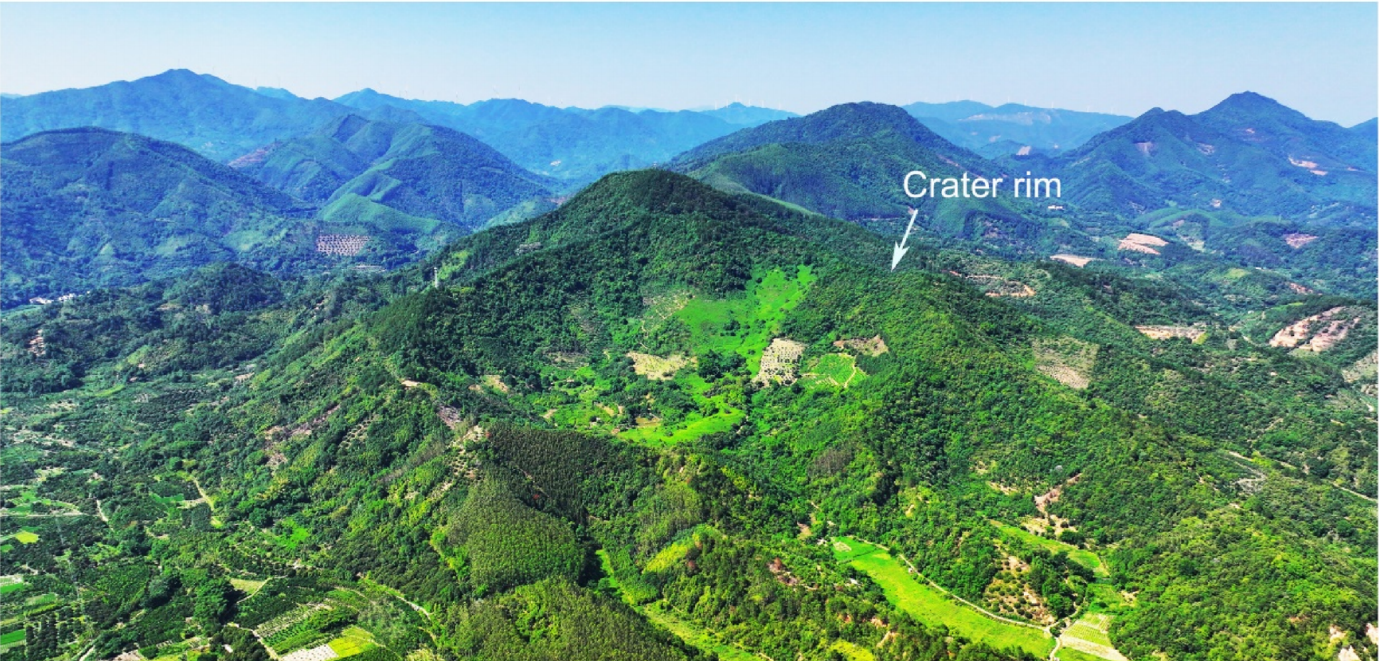
New research from a team of scientists led by Dr. Ming Chen from HPSTAR has discovered a site of an asteroid impact — the Jinlin crater in Guangdong Province, China. This research was recently published in the journal of Matter and Radiation at Extremes. The discovery of the Jinlin crater marks a breakthrough in the investigation of extraterrestrial impacts in southern China.
Collisions between celestial bodies in space are a common natural phenomenon, and the circular depressions formed by these impacts are called impact craters. These craters are widely distributed on the surfaces of planets, becoming a cosmic geological wonder. Throughout Earth's history, it has been impacted by countless extraterrestrial bodies, forming many impact craters. However, owing to Earth's geological activities, which have damaged many craters, few have been preserved, and even fewer have been discovered in China. Earth’s impact craters are closely related to the formation and evolution of celestial bodies, geological changes, environmental and biological mutations, and mineral resources, covering a wide range of knowledge with significant scientific and socio-economic value.
According to the research team, the newly discovered Jinlin crater is located in Deqing County, Zhaoqing City. The crater is located on the slope of a high mountain and is well-preserved, forming a giant bowl-shaped depression with a diameter of nearly one kilometer. This is the largest small-body impact event in the Holocene (the past 11,700 years), with an impact energy equivalent to 600,000 tons of TNT. In contrast, previously discovered Holocene impact craters worldwide are generally much smaller, most measuring less than 100 meters in diameter, with the largest reaching only about 300 meters.
The crater resembles a giant astronomical telescope pointing skyward, creating a unique and awe-inspiring natural landscape. Around 10,000 years ago, a small asteroid, several dozen meters in diameter, collided with the granite slope of a local mountain, causing a massive explosion and forming the crater. Through field investigations and geological sample analysis, the team identified shock-metamorphic phenomena in the rocks and minerals, caused by the intense shock waves, which confirmed an impact origin of the crater.
 Panoramic aerial drone image of the Jinlin crater, taken on May 12, 2025.
Panoramic aerial drone image of the Jinlin crater, taken on May 12, 2025.
The Jinlin crater is situated in the Earth’s tropical-subtropical area, also known as the zone of the Tropic of Cancer. The granite in Deqing County covers more than two-thirds of the total area. This region has a subtropical warm and humid climate, with abundant rainfall and lush vegetation. The chemical and biological weathering of the surface rock layers is intense. The granite in the area has commonly been capped by a weathering crust several dozen to over a hundred meters thick, mainly composed of granite-weathering red soils. The region shows significant geological erosion and frequent soil collapses. The asteroid impact event occurred on a granite mountain with a thick weathering crust. The Jinlin crater, formed in such an environment, not only features a special impact structure made up of a mixture of red soil and granite fragments but is also a natural miracle due to its well-preserved state. Previous impact craters found in China were all located in the northeastern region. The Jinlin crater is the fifth crater discovered in China and the first in southern China, outside of the northeastern region.
Media reports: Impact crater in south China confirmed as world's largest for over 10,000-year period from Xinhua
Earth’s Largest Modern Crater Discovered in Southern China from AIP, ScienceDaily, and EurekAlert, etc.
由中国工程物理研究院北京高压科学研究中心联合广东省科学院组成的研究团队,在我国广东省发现了一处小行星撞击形成的地质遗迹——金林陨石坑。这一研究成果日前发表在英文国际学术期刊《极端条件下的物质与辐射》上。金林陨石坑发现实现了我国南方地区陨石坑的突破。